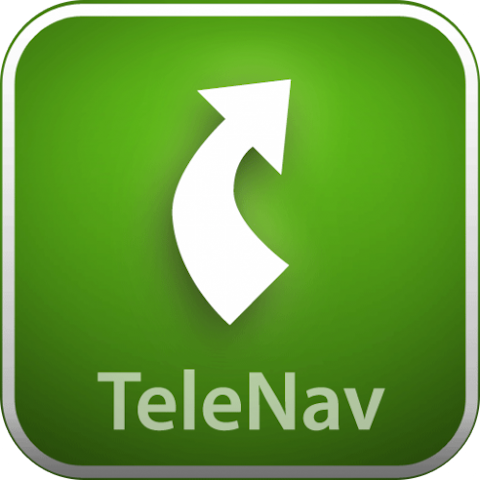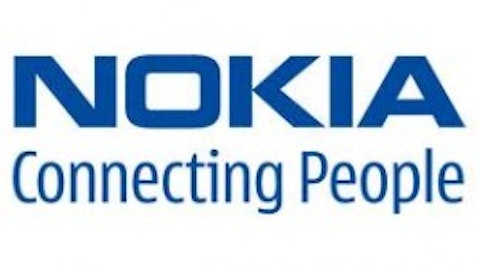Sunnyvale, California-based digital navigation provider Telenav Inc (NASDAQ:TNAV) recently reported a major drop in earnings and negatively revised its long-term outlook. Nevertheless, the company’s most recent earnings report beat Wall Street’s modest expectations.
Since it operates in a competitive industry dominated by medium-sized competitors like Garmin Ltd. (NASDAQ:GRMN) as well as technology giants like Apple Inc. (NASDAQ:AAPL) and Google (GOOG), Telenav’s future as an independent company is by no means assured. However, the company does enjoy certain key advantages. Crucially, it has a cash load of over $200 million and no long-term debt. Relative to its market valuation of roughly $300 million, this is an impressive hoard that may provide the company with some freedom of movement in the coming quarters. It may also provide keen-eyed investors with some attractive opportunities.

Telenav provides GPS-driven location-based services to drivers and mobile device users. The company’s signature products include Scout for Apps and Scout for Cars. Both of these products are turn-by-turn navigation protocols that use voice prompts to alert walkers and drivers of upcoming maneuvers. Scout is compatible with the on-board computers of various car models as well as the operating systems of several major phone brands. The company also offers a suite of auxiliary services for drivers and mobile device users, including vehicle tracking and management. Finally, it provides fleet management services to trucking companies, taxi agencies and logistics firms. In 2012, the company had an EBITDA of $33.7 million on gross revenues of $209.2 million.
Lots of Cash, No Debt
Normally, Telenav Inc (NASDAQ:TNAV)’s mediocre earnings report and subsequent analyst downgrade would not bode well for the company. While it is clear that its management team would prefer to foster organic growth, the company is not without options. In fact, it is sitting on a major cash board that could soon prove useful.
Telenav currently has no long-term debt obligations. Even better, it has about $207 million in cash and equivalents in the bank. Meanwhile, its market valuation is just above $300 million. Most small-cap companies do not have the luxury of such robust stores of liquid capital. As such, Telenav shareholders are in a far better position than they might realize.
Principal Competitors
In recent years, Telenav’s products have lagged those offered by competing firms like Garmin and General Motors’s (GM) OnStar division. Obviously, GM is a major company that brings considerable heft to Onstar’s suite of services. However, even specialized competitors like Garmin are far larger and better-positioned to absorb change in this fast-growing sector. For instance, Garmin has a market capitalization of nearly $7 billion and a cash hoard of nearly $1.4 billion.
Meanwhile, Telenav must contend with even larger competitors like Apple and Google. It is no secret that these outfits have been working feverishly to perfect their enhanced mapping and navigation programs. Although Apple’s sloppily-produced “Maps” feature turned into a public-relations nightmare for the company, it is likely that this setback will be temporary. In the coming years, “augmented reality” programs that integrate mapping, navigation and service directories may well displace Telenav’s more rudimentary Scout product.
However, this competitive threat does not necessarily place Telenav in a bad spot. Its cash hoard is its trump card: Relative to Telenav’s cash-to-market value ratio of about 66 percent, Garmin’s robust 20 percent ratio looks inadequate. If it deploys this cash properly, Telenav could yet unlock some value in its shares.
Possible Moves
Telenav has several options for deploying its cash hoard. Given its relative immaturity and the competitive nature of its industry, it might not be prudent for its board of directors to approve a regular dividend. However, it is possible that some sort of special dividend might be on the horizon. With just 40.6 million shares outstanding, the company could distribute a special cash dividend of $2 per share and keep over 60 percent of its hoard to fund a share buyback.
Then again, it is not inconceivable that the company could initiate a small dividend to give itself a leg up on its low-yield or no-yield industry peers. Assuming an average share price of $8 over the coming 12 months, a 2 percent annual dividend would cost the company about $6.5 million per year. If it can maintain a steady cash flow, this might be sustainable over the long term. However, it might force Telenav to dial back on essential new investments in the future.
Both of these options would undoubtedly boost Telenav’s share price on a temporary basis. Alternatively, the company could use its cash hoard to fund a significant share buyback. Assuming an average cost basis of $8 per share, a $50 million share buyback program would dispatch about 6.25 million shares and reduce the company’s float by 15 percent. This could boost the stock’s price by $2 per share and provide investors with a short-term return of 25 percent.
In sum, Telenav’s cash-rich balance sheet makes it an attractive target for short-term and medium-term investors. Although it faces plenty of challenges in an increasingly competitive space, it may be able to provide value for shareholders and create an in-and-out profit opportunity for savvy market players.
The article This Company Is Looking Good originally appeared on Fool.com and is written by Mike Thiessen.
Copyright © 1995 – 2013 The Motley Fool, LLC. All rights reserved. The Motley Fool has a disclosure policy.





